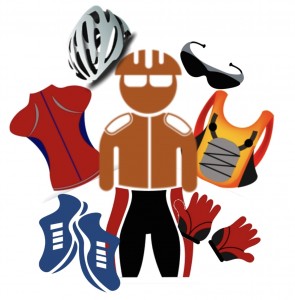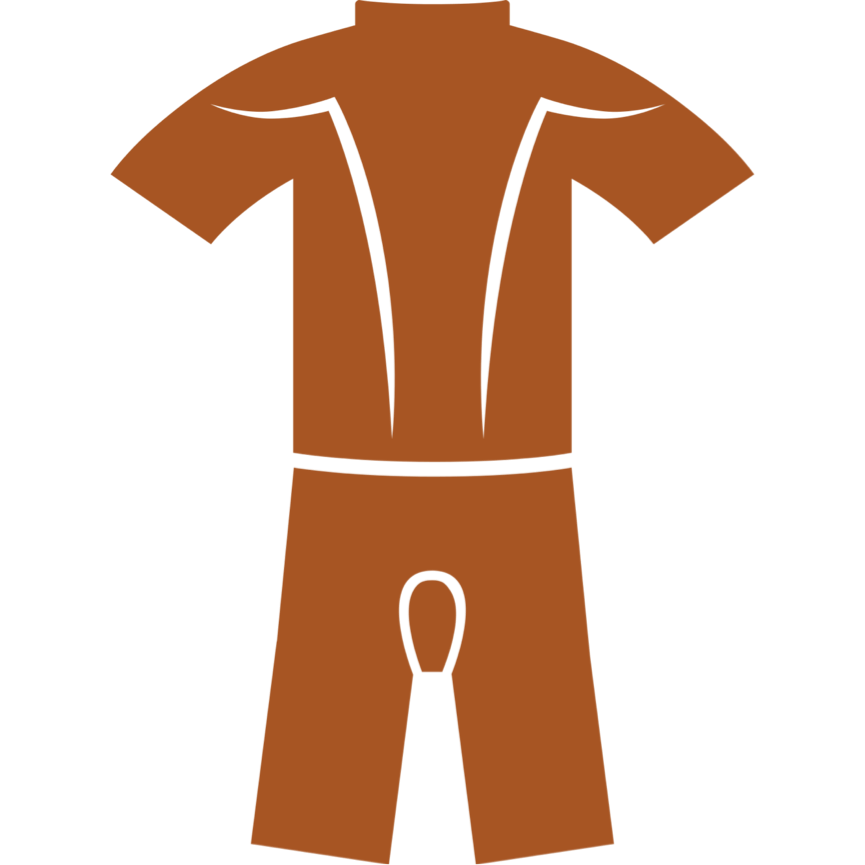Are You Dressed to Protect Yourself?

Your kit is just as essential as the correct sustenance!
Please ensure you are dressed in clothes that are versatile and adaptable to the quickly changing conditions and temperatures, and that you are dressed in a way that helps you to regulate your temperature – layering is the best way to achieve this, where you can gradually peel off the outer layers to keep you comfortable. You should also never wear clothing that is too loose fitting that could potentially catch in the spokes or chain! Once you are a member, club kit is available for you to buy.
For your protection, ensure you are wearing a helmet, gloves and the correct shoes!

This is without a doubt the single most important part of your cycling kit, and can truly be the difference between a very serious head injury and a simple bump on the head! Please make sure your helmet fits you correctly. With the straps on the helmet correctly adjusted, the helmet should cover the forehead; not tip backwards or forwards and the straps should fit around the ear. You should be able to tip your head forward with the strap unfastened, and the helmet should not fall off.
When buying a helmet, it is best you have it correctly fitted at a cycle shop by an experienced member of staff. It is also really important to make sure your helmet has not degraded – did you know that the polystyrene layer inside each helmet eventually hardens and degrades, slowly reducing the impact shock absorption over time that this layer provides on impact? This is why you should replace your helmet at least every 3 years or so.
Here is some useful information on the British Cycling website around buying and fitting a helmet.

You should never cycle without gloves – period. They serve 2 purposes:
(1) Warmth: During the Winter months, the circuit gets very cold and frosty, and when you are cycling at high speed your fingers are the first to feel the cold. Equally, when you are moving slowly during skills sessions, your fingers are not moving so much and need to be kept nice and snug. Thermal, water-resistant, full-fingered gloves will keep your hands warm, which in turn will enable you to be quicker using your brakes and changing gears.
(2) Protection: This is not always obvious, but think about what happens when you fall – the first instinct is to reach out to the floor with your hands to break your fall! Almost inevitably, fingers and hand palms are the first to touch the ground. Wearing thick gloves during Winter and fingerless mitts during Summer will at the very least keep you from losing a layer of skin on your hands and fingers!

Your layers are just as important as your helmet – you need to stay warm, or be able to cool down effectively if you get too hot. This is the best way to ensure your temperature is regulated – you can pile them on if you get cold, and peel them off if you get too hot.
During Winter, cycling around the track can be cold and windy where you are not covered up. The kit you need to keep warm are arm warmers, gloves, leg warmers, shoe covers and if you really feel the cold you may want a thermal cycling jacket. A snood is also a great peace of kit, it can be used as a scarf or pulled over your head as a hat that you can put your helmet on top of. Wearing a cap under your helmet will also keep your head warm. Arm and leg warmers are essential when cycling they don’t just keep your muscles warm they also stop your muscles from seizing up when you stop cycling.
Another not-so-often thought of reason for wearing the right kit, especially a base-layer, even during the Summer, is that it provides a second skin. This can make the difference between a minor graze and some very nasty gravel rash should you happen to have an accident!
There is much information on dressing safely and for the weather on the internet to help guide you, but a good place to start is on the British Cycling Insight Zone.